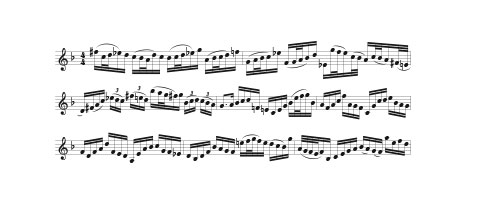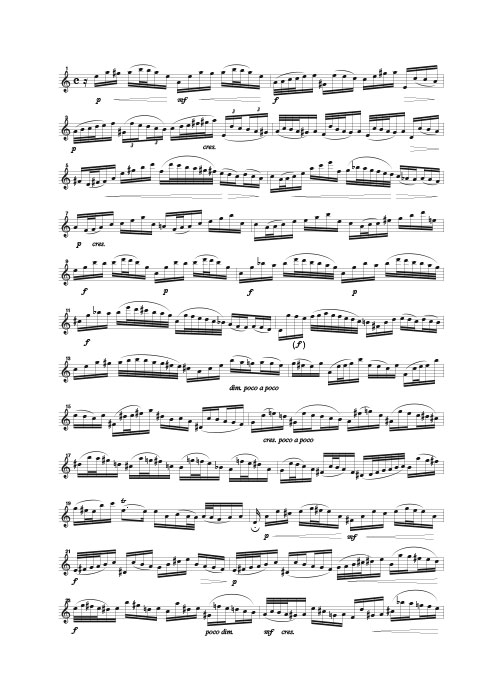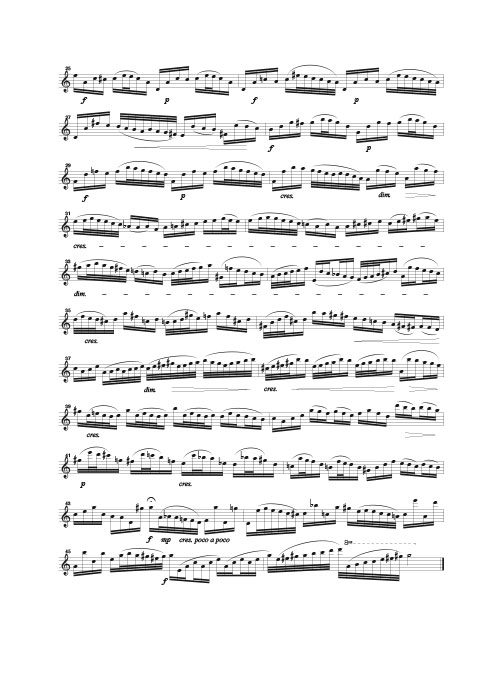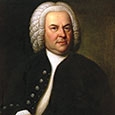I first encountered the Bach A Minor Partita in my sophomore year at Eastman, after having just returned from three years of military service during World War II. I had previously studied the Bach E Flat Major, C Major and E Minor sonatas, and now I was eager to learn the “Sonata in A minor for Flute Alone” (as the Partita was then called). This Bach “sonata” was included in the Famous Flute Studies and Duets book (endearingly referred to by flute students as the “Big Blue Book”) compiled and edited by Robert Cavally. At that time it was an Albert J. Adraud publication, but is now published by Hal Leonard.
The “Big Blue Book” Bach sonata was a reprint from an unknown source and profusely edited. Joseph Mariano, my flute professor, eradicated all the superfluous dynamic and articulation markings and encouraged me to take a fresh approach to the work, which I was happy to do – but of course with Mr. Mariano’s expert guidance.
Although I was unsure how to approach the first movement Allemande in matters of both tempo and phrasing, I instinctively felt that too many flutists were playing it excessively fast, as if paying homage to the fiery brilliance of the Bach E Major Violin Prelude of Partita No. 3 (below). But could there also be a danger of performing the Allemande too slowly? It remained an open question.
Bach E Major Violin Prelude of Partita No. 3

Then, fast forward seventeen years to December of 1962 when Woodwind World magazine published a breakthrough article by the highly respected American flutist, John Solum – Bach’s Partita for Solo Flute: Forty Years of Discovery. Solum’s conscientious research, which included a visit to the State Library in Marburg, Germany where the only existing source manuscript of the work was located, proved beyond doubt not only that its title was Partita, not Sonata, but also that it was indeed an authentic work by J.S. Bach. (Many musicologists had heretofore harbored serious reservations about the authenticity of the work.)
Three months later the German publisher Bärenreiter issued the first printing of the now correctly titled Joh. Seb. Bach Partita a-moll für Flöte allein, BWV 1013, but regrettably neglected to credit John Solum’s pioneering research. Solum’s Woodwind World article attracted widespread attention at the time and certainly stoked my interest again in finding an appropriate tempo range and performance style for the flute allemande movement. I decided to do an in-depth survey of all of the Bach allemandes, of which there were two for violin, six for cello, and eighteen for harpsichord, to see if I could find some parallel models to the flute
allemande.
Having sifted through all twenty-six allemandes, the one that came closest in style to the flute allemande turned out to be the first movement of Bach’s Violin Partita No. 2 in D Minor. The similarity of the phrase structure in this violin allemande to that of the flute motivated me to embellish many of flute allemande intervals by applying the characteristic sixteenth-note triplet and thirty-second note figurations of the violin allemande. The integration of these Bachian elements into the flute allemande (but only on the repeats) thus made it even more appropriate to adopt a stylish, unhurried, yet danceable tempo (quarter note = c. 63-66). My final embellished version of the allemande is on the following pages and is the one I have played in several of my performances over the years. A three-line sample of the violin allemande from the Bach D Minor Partita is also illustrated for comparison.
Bach D Minor Partita for violin, allemande

Meanwhile, the wide array of recordings of both the Bach D Minor Violin Partita and the A Minor Flute Partita currently available on YouTube gives musicians an unparalleled opportunity to compare many interpretations of the allemande. My current favorites among the violin partita performances are those by Maxim Vengerov, Gidon Kramer and Itzhak Perlman. Hilary Hahn’s performance is interesting for her surprisingly spacious tempo – spacious enough to allow her to vibrate on virtually every sixteenth note. Among the traverso players, Kate Clark stands out in her performance of the Allemande of the A Minor Flute Partita.
The culmination of my explorations into the Bach A Minor Allemande came on August 12, 2006 when I actually learned how to dance the allemande – elegantly and without hurrying. This happened at the NFA convention in Pittsburgh where Betty Bang Mather and Elizabeth Sadilek presented an illuminating lecture and demonstration on “unlocking the performance mysteries of Bach’s flute allemande through historical dance, poetic delivery, and symbolic numbers,” and guided audience members through all of the dance steps. So enthusiastically received was Betty and Elizabeth’s presentation that their recently published book, Partita in A Minor for Solo Flute BWV 1013 with Emphasis on the Allemande (Falls House Press), deservedly became a quick sell-out at the convention, and to this day it remains a valuable resource.
Bach Partita in A Minor for Flute
Allemande
Embellished Version by Walfrid Kujala








